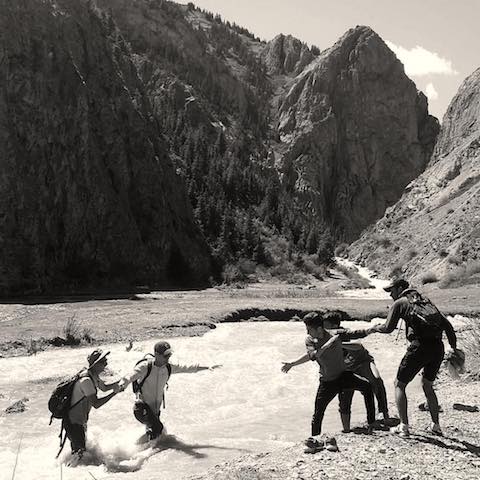The visualization probably doesn’t look very good on a mobile device. Here it is by itself. Drag and hover to interact with the visualization.
Yielded Students: Preadmit Social Network
I recently finished the D3 social network graph that I started a couple months ago. The results are interesting, though messy. I didn’t do any advanced graph calculations so the following is all just based on visual inspection.
Some basic insights:
- Between the 67 nodes, we had over 750 edges
- 1 node = individual person, 1 edge = relationship between two nodes.
-
The most isolated nodes had 0 links/edges (i.e. didn’t know anybody at the university prior to attending)
- The most connected node had more than 30 links.
- These were students that attended the university’s summer camp program.
-
That’s an average of 11 edges per node (i.e. the mean number of connections per person was 11).
-
19% of the nodes aren’t connected to the main group (i.e. no nth degree connections to the largest group in the graph).
-
In general, the individuals who had the least connections, still have fewer connections. While this seems obvious, I feel like it’s still worth noting that it’s (generally) easier to add linkages than to break them, so those with more initial connections maintain their more-connected status.
-
By far the most connected group was the Tajik GBAO students. This is not surprising as the region seems to be more tight-knit, geographically concentrated and isolated, and religiously/ethnically homogenous than the other places.
-
Kyrgyz, non-GBAO Tajiks had average connectedness (due to larger geographic spread).
- Pakistani, Kazakh, and Afghan students had low connectedness (even larger geographic spread).
This graph is interesting because I highly doubt there are many other universities that have this level of interconnectedness prior to admissions. At Yale, I knew four people prior to attending and that seemed pretty normal; a lot of my classmates knew zero to two people? Of course there were people who went to more famous high schools and probably knew 30+ people but that wasn’t very common at all.
In conclusion, I hadn’t realized how generally connected the students were but it does seem to explain some of the interesting social dynamics, post hoc.
